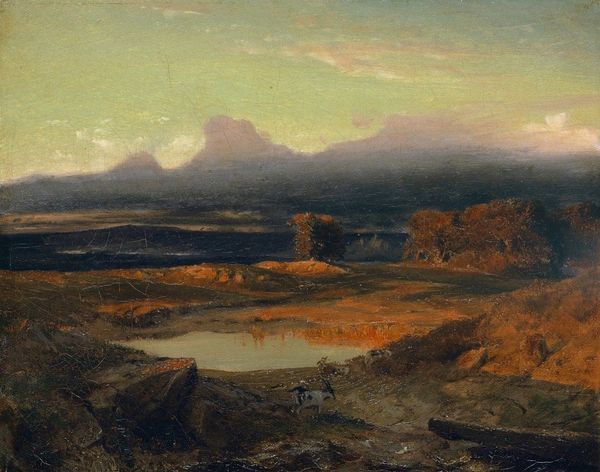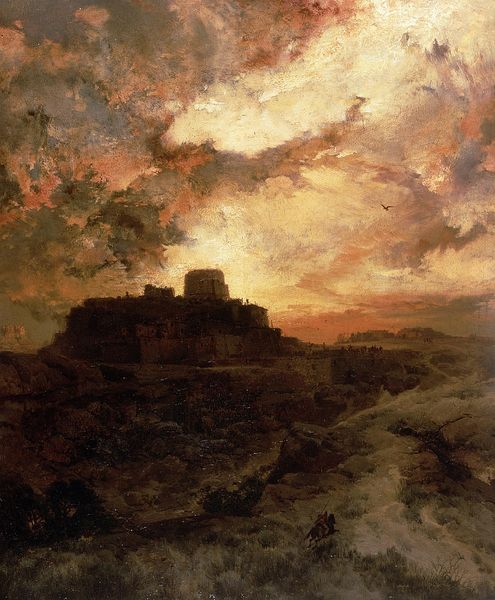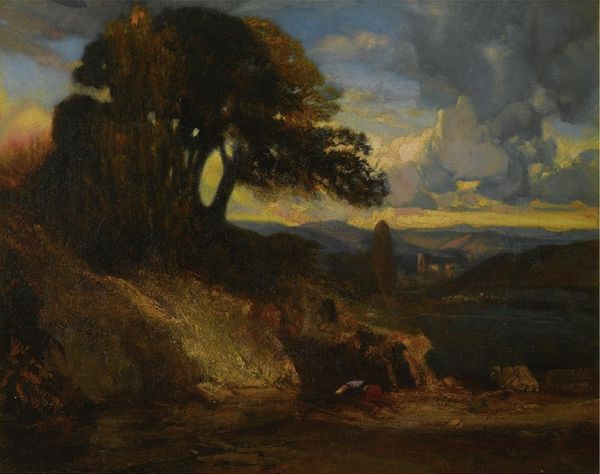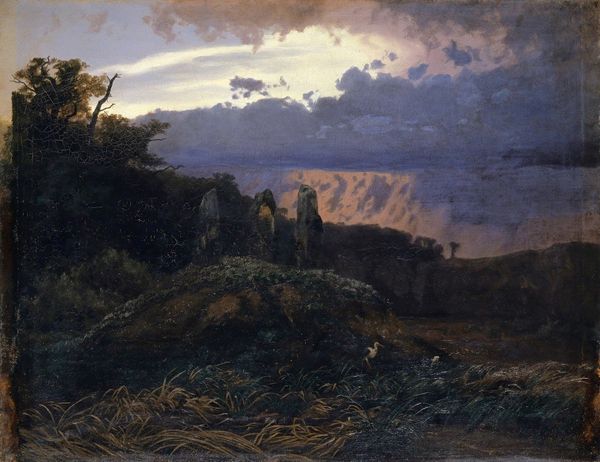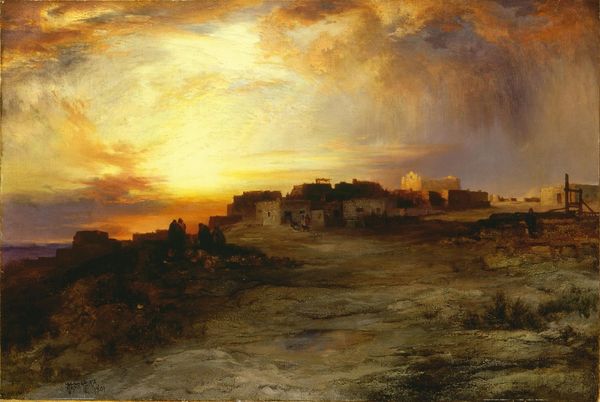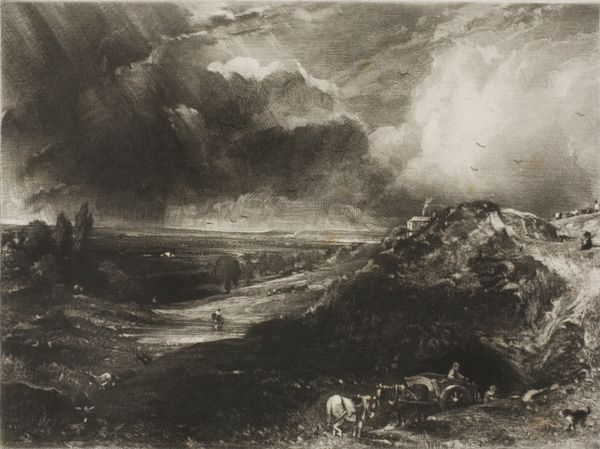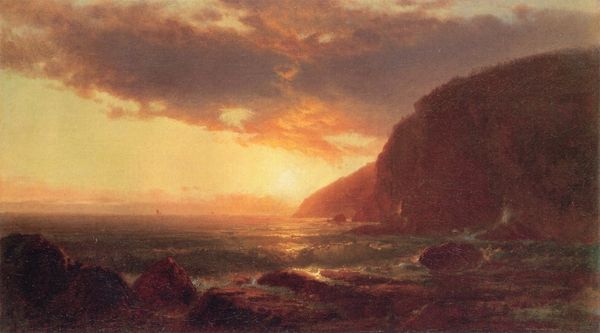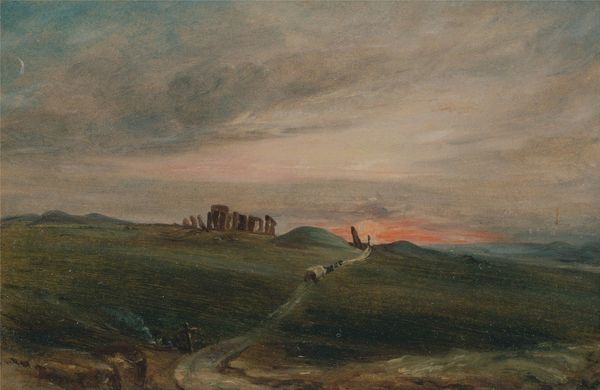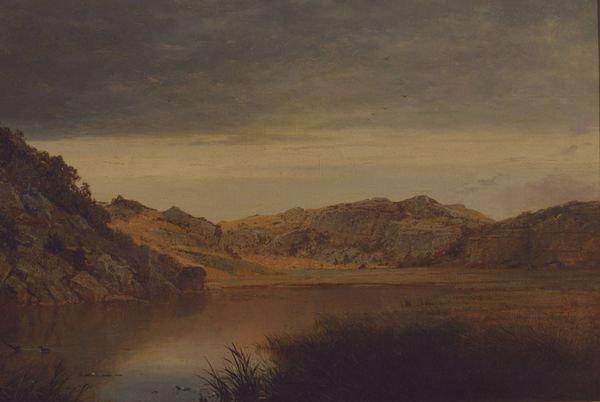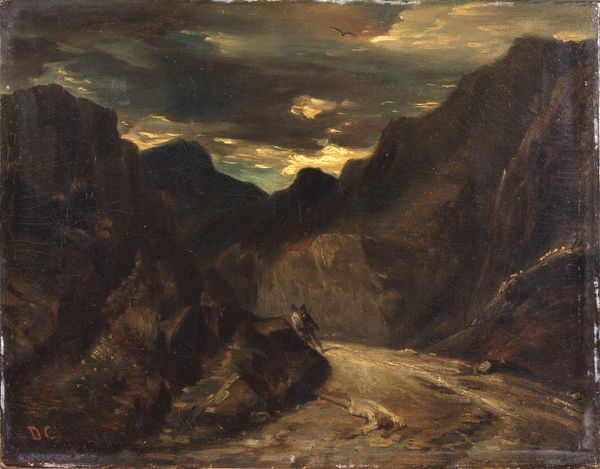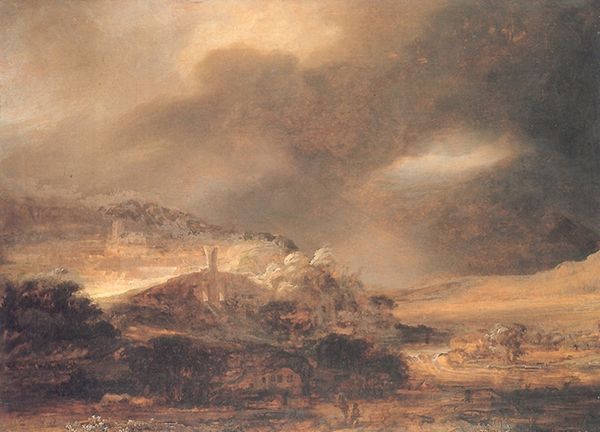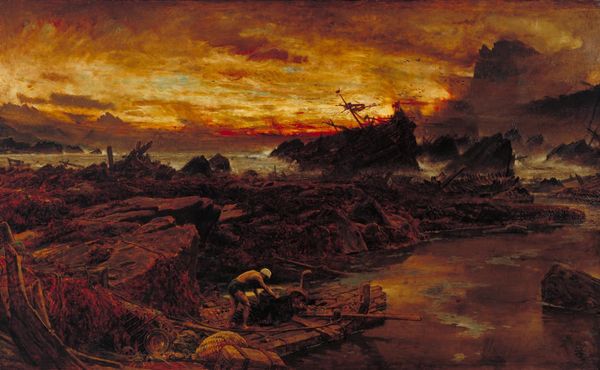
Copyright: Public domain
Editor: This is Thomas Moran's "Childe Roland to the Dark Tower Came," an oil painting from 1859. It’s really striking how dark the colors are. The sunset seems almost violent. What do you see in this piece that I might be missing? Curator: Its strength lies in the dramatic interplay of light and shadow. Notice how the composition directs your gaze – the eye is drawn initially to the fiery horizon, but inevitably settles on the dark tower. How does this dynamic of attraction and foreboding inform your reading of the image? Editor: I see what you mean. The sunset almost feels like a warning, drawing attention to the imposing, yet isolated, tower. It’s unsettling. How do you think the texture adds to this feeling? Curator: Observe how the brushstrokes create a sense of unease. The roughness mimics a wasteland, conveying desolation and difficulty. Also, consider the semiotics of color: red symbolizing both danger and perhaps, faded glory. How does Moran use color to advance meaning and emotional engagement? Editor: The red does enhance that ominous mood, making the scene seem both beautiful and terrifying. Thinking about the brushstrokes and the way he layered the paint, it almost feels like the landscape itself is resisting Roland’s journey. Curator: Precisely! The painting, therefore, goes beyond simple illustration, engaging in a visual language rich in textural and chromatic significations. Considering that Roland is based on a Robert Browning poem of the same title, Moran paints him standing on the precipice, physically close yet mentally and morally repulsed by the Tower itself. The real achievement of Moran’s image is to ask: will he succumb? Editor: I had not thought of it that way! I’ll definitely look at Moran's piece with fresh eyes. Thank you! Curator: My pleasure; thinking about the visual grammar of art refines our interpretation and amplifies our understanding.
Comments
No comments
Be the first to comment and join the conversation on the ultimate creative platform.
